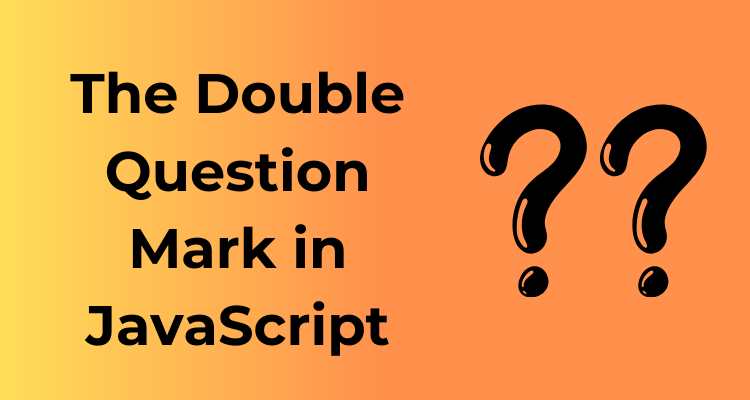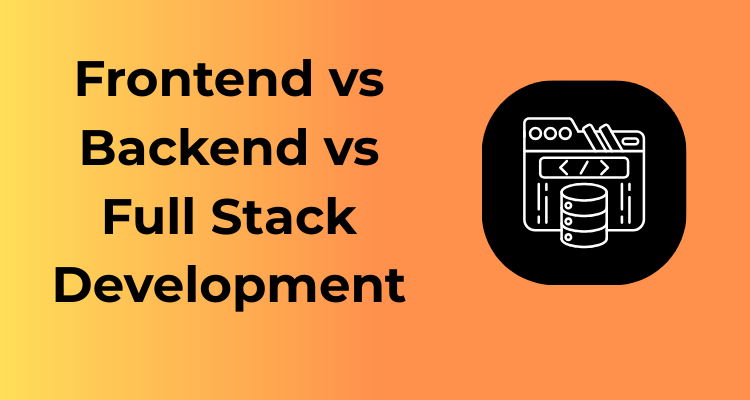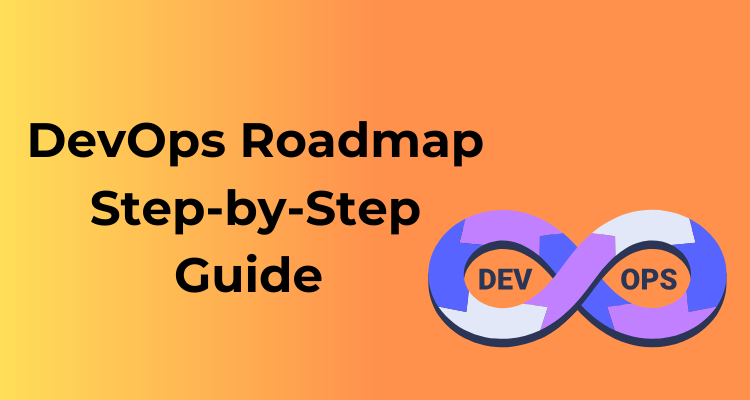Have you ever stumbled across the double question mark (??) in JavaScript and wondered, “What in the world does this mean?” Don’t worry—you’re not alone! The double question mark, also called the Nullish Coalescing Operator, is one of those tools in JavaScript that seems simple yet packs a lot of power. Once you unlock its essence, it can become a handy trick in your coding toolkit. So, let’s dive in and break it down in plain English!
Let’s Start from the Basics
At its core, the double question mark (??) is used to provide a default value for a variable when it is either null or undefined. Notice those two specific terms: null and undefined. That’s the key difference that makes this operator special compared to its siblings like the logical OR (||) operator. More on that later!
Think of it this way: if you’ve ever tried to access a value in your code and it ended up being “empty,” the ?? operator can swoop in like a superhero and say, “Don’t worry, here’s a fallback value you can count on!”
Why Do We Need This?
JavaScript developers have long relied on the || (OR) operator to handle falsy values. However, using || could lead to situations where perfectly valid values like 0, false, or '' (an empty string) are incorrectly overridden because they’re also considered “falsy.” This is where ?? comes to our rescue!
The ?? operator solves this by focusing only on nullish values—those that are null or undefined. It ignores other falsy values like 0 or false, allowing you to confidently handle your data without losing valid inputs.
How Does It Work?
The syntax for using ?? is incredibly straightforward:
let result = value1 ?? value2;
Here’s what happens:
- JavaScript checks if
value1is eithernullorundefined. - If yes, it evaluates to
value2(the fallback value). - If no, it evaluates to
value1(the first value is valid!).
A Simple Analogy
Imagine you’re at a coffee shop and you ask for sugar in your coffee. Here’s how the conversation might go:
Customer: “Do you have brown sugar?”
Barista: “Nope, but I have white sugar. Would you like that instead?”
In this case:
- Brown sugar: your first choice (e.g.,
value1). - White sugar: the fallback option (e.g.,
value2). - If brown sugar is unavailable (i.e.,
nullorundefined), you get white sugar instead. That’s the magic of??!
When Should You Use It?
Great question! Use the ?? operator when you want to:
- Provide sensible default values without overwriting valid ones like
0orfalse. - Handle missing or unknown data in a clean, concise way.
- Make your code more readable and expressive—so the next developer (which could be future you!) appreciates your work!
Visualizing Values: The Core Functionality Behind “??”
Imagine you’re building a program in JavaScript and you need to deal with undefined or null values. Frustrating, right? Here’s where the magic of the double question mark (??), also known as the nullish coalescing operator, steps in to save the day.
So, how does it work? Buckle up because we’re about to break it all down with some friendly explanations and examples!
Grasping the Basics: “??” Simplified
The double question mark operator is essentially the superhero you need when you want to provide a fallback value for null or undefined. Its mission? To check if the left-hand side of the operator is “nullish”. If it is, it returns the value on the right-hand side. Otherwise, it keeps the value on the left-hand side.
In simpler terms:
- If the value is
nullorundefined, go with the fallback (right-hand side). - If the value is anything else, embrace it as it is (left-hand side).
Let’s See It in Action!
Here’s a quick example to make things crystal clear:
let username = null;
let displayName = username ?? "Guest";
console.log(displayName); // Output: "Guest"
In this example, username is null, so the operator jumps to the right-hand side and gives us "Guest". Nice and simple, right?
Why Is This Different From a Regular Check?
Now, you might think – “Wait, can’t I just use || (OR) here?” Well, not quite. That’s because || considers several values “falsy,” such as 0, false, and "" (empty string). The ?? operator, on the other hand, is much more **targeted**. It only flags null or undefined as conditions for fallback.
Here’s how they differ in practice:
// Using || (OR)
let points = 0;
console.log(points || 100); // Output: 100 (because 0 is treated as "falsy")
// Using ?? (Nullish Coalescing)
let points = 0;
console.log(points ?? 100); // Output: 0 (because 0 is NOT null or undefined)
See how ?? sticks closely to its role? It’s like a precision tool designed with null and undefined in mind.
Best Practices for “??”
If you want your code to be clean and reliable, consider these tips:
- Use
??when you specifically want to handlenullorundefined, but still retain “falsy” values like0orfalse. - Avoid overloading your expressions with multiple
??in complex cases. Nesting can make your code tougher to read. - Pair
??with default values only where it makes logical sense, such as when dealing with optional user inputs or API data.
Double Question Mark vs. Logical OR: Spotting the Difference
Alright, let’s dive right in—at first glance, the double question mark (??) and logical OR (||) operators in JavaScript might seem strikingly similar, right? Both of them are used to evaluate and return values, so what’s the fuss about? Trust me, though, they have distinct behaviors that can make a world of difference in your code.
The Logical OR Operator: The Old Standby
First up, the logical OR (||). You’ve probably seen this in action a dozen times. It’s a short-circuit operator that evaluates expressions from left to right and returns the first “truthy” value it encounters. In JavaScript terms, “truthy” refers to any value that isn’t false, null, undefined, 0, NaN, or an empty string ("").
For example:
const value = "" || "default value"; console.log(value); // Output: "default value"
Here, since an empty string is falsy, the logical OR bypasses it and settles on "default value".
Enter the Double Question Mark (Nullish Coalescing)
The double question mark operator, introduced in ES2020, is a more specialized tool. It specifically checks for null or undefined, ignoring other falsy values like 0 or "". This subtle distinction is where the magic lies!
Here’s how it works:
const value = "" ?? "default value"; console.log(value); // Output: ""
See the difference? Unlike ||, the ?? operator doesn’t treat an empty string as a reason to switch to the default value. It only steps in when the value is either null or undefined.
When to Use What?
Still scratching your head about when you’d use one over the other? No worries, let’s break it down:
- Go with
||if your goal is to account for a broader range of falsy values. For instance, when you want something like0or""to also trigger a fallback value,||is your buddy. - Choose
??when you specifically care about distinguishingnullandundefinedfrom other falsy values. This is especially helpful when working with APIs, where a legitimate value like0or an empty string should not be mistaken for “missing” data.
A Quick Comparison
| Operator | Checks For | Behaves Differently With |
|---|---|---|
|| | Falsy values (e.g., 0, NaN, null, undefined, "", false) | Empty strings, 0 |
?? | Only null and undefined | Does not treat empty strings or 0 as reasons to return a fallback value. |
Final Word—The Right Tool for the Job
JavaScript gives you both || and ?? for a reason—they’re designed for different scenarios. Where || handles generic fallback logic, ?? steps up for those moments when you want fine-tuned control over nullish values. So, the next time you’re coding, think about the data you’re dealing with! Using these operators correctly can not only make your scripts smarter but also prevent those pesky bugs that arise from misinterpreting data. Happy coding!
Practical Examples: Real-World Scenarios Where “??” Shines
Welcome to the world of practical magic with the double question mark (??) operator! It’s one thing to understand what ?? does, but it’s entirely another to see it flex its muscles in real-life scenarios. In this section, let’s roll up our sleeves and dive into some relatable examples where ?? truly earns its keep. Ready? Let’s go!
1. Providing Default Values
Imagine you’re building a feature where users can input their preferences—for instance, setting their favorite color. What if a user skips this option or leaves it empty? The ?? operator is your best friend here to ensure that no one’s stuck with unpredictable outputs.
const userColor = null; const defaultColor = "blue"; const selectedColor = userColor ?? defaultColor; console.log(selectedColor); // Output: "blue"
This example ensures that if userColor is null or undefined, the defaultColor will take charge. No more unwelcome surprises!
2. Fetching User Input Safely
When working with web forms or APIs, we often rely on user inputs. But what happens if certain fields are missing? That’s where ?? steps up—it provides a safety net to keep your application running smoothly.
const userInput = undefined; // Input from a form const safeInput = userInput ?? "No input provided"; console.log(safeInput); // Output: "No input provided"
By applying ??, you ensure that even if users forget to fill in a field, your code delivers a friendly response instead of breaking.
3. API Responses: Handling Missing Data
When consuming data from an API, it’s common to encounter missing or null values, especially in optional fields. Instead of running into unexpected behavior, you can set defaults with ease using the nullish coalescing operator.
const apiResponse = {
username: "coder123",
age: null, // Missing or incomplete data
};
const displayedAge = apiResponse.age ?? "Age not available";
console.log(displayedAge); // Output: "Age not available"
This makes your application robust and user-friendly, even when dealing with imperfect data.
4. Setting Configuration Options
Here’s another gem—configurations. Suppose you’re building an application with settings that users can customize, like font size. If they don’t provide their preferences, you’ll want to stick to defaults without resorting to messy conditional statements.
const userSettings = {
theme: undefined,
fontSize: null,
};
const theme = userSettings.theme ?? "light";
const fontSize = userSettings.fontSize ?? "medium";
console.log(theme); // Output: "light"
console.log(fontSize); // Output: "medium"
In just a couple of lines, your application is smart, clean, and flexible. Beautiful, isn’t it?
5. Combining with Falsy Values
Here’s a bonus: the ?? operator is perfect for differentiating between truly missing data (null or undefined) and other “falsy” values like 0 or an empty string. Unlike ||, which treats all falsy values equally, ?? respects them.
const count = 0; const finalCount = count ?? 10; console.log(finalCount); // Output: 0
This means you can safely use ?? when you want to allow valid, falsy values to pass through.
Safeguarding Your Code: Preventing Bugs with Nullish Coalescing
Have you ever encountered those pesky bugs in your code that make you want to pull your hair out? You know, the ones caused by unexpected null or undefined values sneaking in and wreaking havoc? Don’t worry—you’re not alone! Lucky for us, JavaScript’s nullish coalescing operator (??) is here to save the day, helping you safeguard your code against these hiccups.
A Common Bug Scenario – Enter the Chaos
Imagine this: you’re writing an application where users can customize a product. You set up a default value for some options in case the user doesn’t make a choice. It’s supposed to be smooth sailing, but suddenly, some users’ settings break the app. Why? Because somewhere in the data flow, instead of defaulting to “safe” values, the app took a wrong turn when encountering undefined. Yikes!
Enter the magic of the ?? operator, which allows you to assign default values exclusively when your variable is null or undefined. Not zero, not an empty string, but specifically those two troublemakers.
Here’s Why This Can Save the Day
A common source of bugs comes from relying on the logical OR (||) operator to set default values. While || works by checking truthy and falsey states, it’s easy to accidentally exclude valid values like 0, false, or "" (empty string). These are falsey, but they might be totally legit in your app!
For instance, let’s say you’re building a web form, and users can select the number of items (which might include 0). If you used ||, your app might interpret that 0 as “false” and replace it with your default value. The result? Unexpected behavior and frustrated users.
How Does Nullish Coalescing Fix This?
The nullish coalescing operator steps in to ensure your code behaves as expected. Instead of checking for truthiness, it only checks explicitly for null or undefined. If the variable has one of these values, it defaults to the fallback you specify. Otherwise, it keeps the original value—even if that value is something like 0, false, or "".
// Using ?? let userSelectedItems = 0; // User choice let items = userSelectedItems ?? 5; // Default is 5 console.log(items); // Outputs: 0 (because 0 is valid, not null/undefined)
Practical Applications: Spotting and Preventing Bugs
Using nullish coalescing is especially powerful when working with:
- API responses: Default a field when a response doesn’t include a value.
- Configuration settings: Provide fallbacks for app options that may not always be explicitly set.
- User input: Handle undefined inputs without interfering with valid, but falsey values like
0or an empty string.
With ??, your defaults become smarter, targeted, and less likely to cause errors. Instead of manually writing verbose checks or relying on less precise operators like ||, this clean little operator removes uncertainty in your codebase.
Combining “??” with Other JavaScript Features: Making Your Code Smarter

Hello JavaScript enthusiasts! Let’s dive into a delightful topic today—how to combine the nullish coalescing operator (??) with other powerful JavaScript features to take your code to the next level of brilliance. Grab a coffee (or tea), and let’s chat about how you can make your code smarter, cleaner, and, dare I say, magical.
Why Combine “??” with Other Features?
The ?? operator is already a fantastic tool for handling null and undefined values. But what if we could amplify its usefulness by teaming it up with other powerful JavaScript tricks? By blending tools like destructuring, default parameters, and optional chaining into the mix, you unlock some seriously cool synergy.
Pairing “??” with Optional Chaining
Optional chaining (?.) is like the best friend of ??. They work hand-in-hand to navigate potential obstacles in your code. Optional chaining helps us safely access deeply nested object properties without fear of encountering an error. If something along the way is null or undefined, it returns undefined instead of breaking everything.
Now, imagine using ?? after optional chaining:
const userProfile = {
name: "Alex",
preferences: {
theme: null,
},
};
const theme = userProfile?.preferences?.theme ?? "default-theme";
console.log(theme); // Output: "default-theme"
See what happened there? If the optional chaining returns null or undefined, ?? kicks in to provide a sensible fallback.
Spicing it Up with Default Function Parameters
Another killer combo involves using ?? alongside default parameters in functions. This setup ensures you handle cases where arguments may be missing or intentionally set to risky values like undefined.
Check this out:
function getDiscountedPrice(price, discount = 0) {
const finalPrice = price ?? 100; // Default to 100 if price is nullish
return finalPrice - discount;
}
console.log(getDiscountedPrice(null, 20)); // Output: 80
console.log(getDiscountedPrice(undefined)); // Output: 100
This combination ensures your functions behave predictably, even when input values like null or undefined sneak in uninvited.
Destructuring with a Nullish Twist
Object and array destructuring makes handling data elegant. By integrating ??, you can take it up a notch when dealing with mixed or sparse datasets:
const settings = {
language: null,
fontSize: undefined,
};
const {
language = "en",
fontSize = 14,
} = settings;
console.log(language ?? "en"); // Output: "en"
console.log(fontSize ?? 12); // Output: 12
The nullish coalescing operator lets you control fallbacks dynamically, making destructuring safer and more nuanced.
Nesting “??” for Advanced Logic
For those moments requiring multiple default options, you can nest ?? operators to express priority logic seamlessly:
const userSettings = {
theme: null,
};
const selectedTheme = userSettings.theme ?? customTheme ?? "light";
console.log(selectedTheme); // Output: customTheme or "light" if both are nullish
Nesting allows you to say, “Hey, if this value isn’t good, try that one, and if that also fails, here’s a guaranteed fallback.” Pretty sweet, right?
Pro Tips to Remember
- Focus on readability: Combine with care, and avoid creating overly complex expressions that could confuse future-you.
- Know the rules: Remember that
??only checks fornullorundefined. Values likefalse,0, or an empty string (“”) won’t trigger its fallback logic. - Lint wisely: Tools like ESLint often suggest best practices when using
??. Pay attention to those tips!
Myths and Misunderstandings: Addressing Common Confusions About “??”
Ah, the nullish coalescing operator (“??”)! It’s one of those nifty JavaScript features that can either make you look like a coding wizard or leave you scratching your head in confusion. But like all powerful tools, it comes with its fair share of myths and misconceptions. Let’s break these down one by one so you can confidently add “??” to your coding arsenal.
Myth 1: “??” and “||” do the same thing
This is, by far, the most common confusion. Developers often assume that || (logical OR) and ?? (nullish coalescing) are interchangeable, but they serve distinct purposes. Let me explain:
||: This operator returns the right-hand side if the left-hand side is falsy. Remember, a falsy value in JavaScript includesfalse,0,""(empty string),null,undefined, andNaN.??: This operator, on the other hand, is more selective. It only returns the right-hand side if the left-hand side isundefinedornull. Falsy values like0or""will not trigger the right-hand side.
So, in short, ?? is much stricter because it doesn’t treat all falsy values as invalid!
Myth 2: You can mix “??” with logical operators recklessly
Another big misconception is thinking you can freely mix ?? with logical operators like || or && without understanding the rules. Spoiler: JavaScript won’t let you do it unless you group them properly.
For instance, this won’t work:
let result = value1 || value2 ?? value3;You’ll get a syntax error because JavaScript doesn’t know how to evaluate this. To fix this, you need to use parentheses to clarify your intent:
let result = (value1 || value2) ?? value3;So, keep those parentheses handy when you’re combining ?? with other operators, okay?
Myth 3: “??” works with any value, including objects and arrays
Here’s the deal: ?? is specifically designed to address cases where values are null or undefined. It’s not about validating other types of “empty” data, like an empty array ([]) or object ({}). Let’s demystify with an example:
let value = [];
let result = value ?? "default";
// Result: []
In this case, ?? does not replace the empty array with "default" because an empty array is neither null nor undefined. It’s a valid value.
The takeaway? Make sure you understand that “emptiness” in JavaScript can mean different things based on the operator you’re using!
Myth 4: “??” slows down performance
Let’s bust this myth right now: using ?? is not an expensive operation. In fact, it’s just as efficient as other operators like || or &&. If readability and maintainability are your goals, don’t be afraid to use it. Your future self will thank you!

















